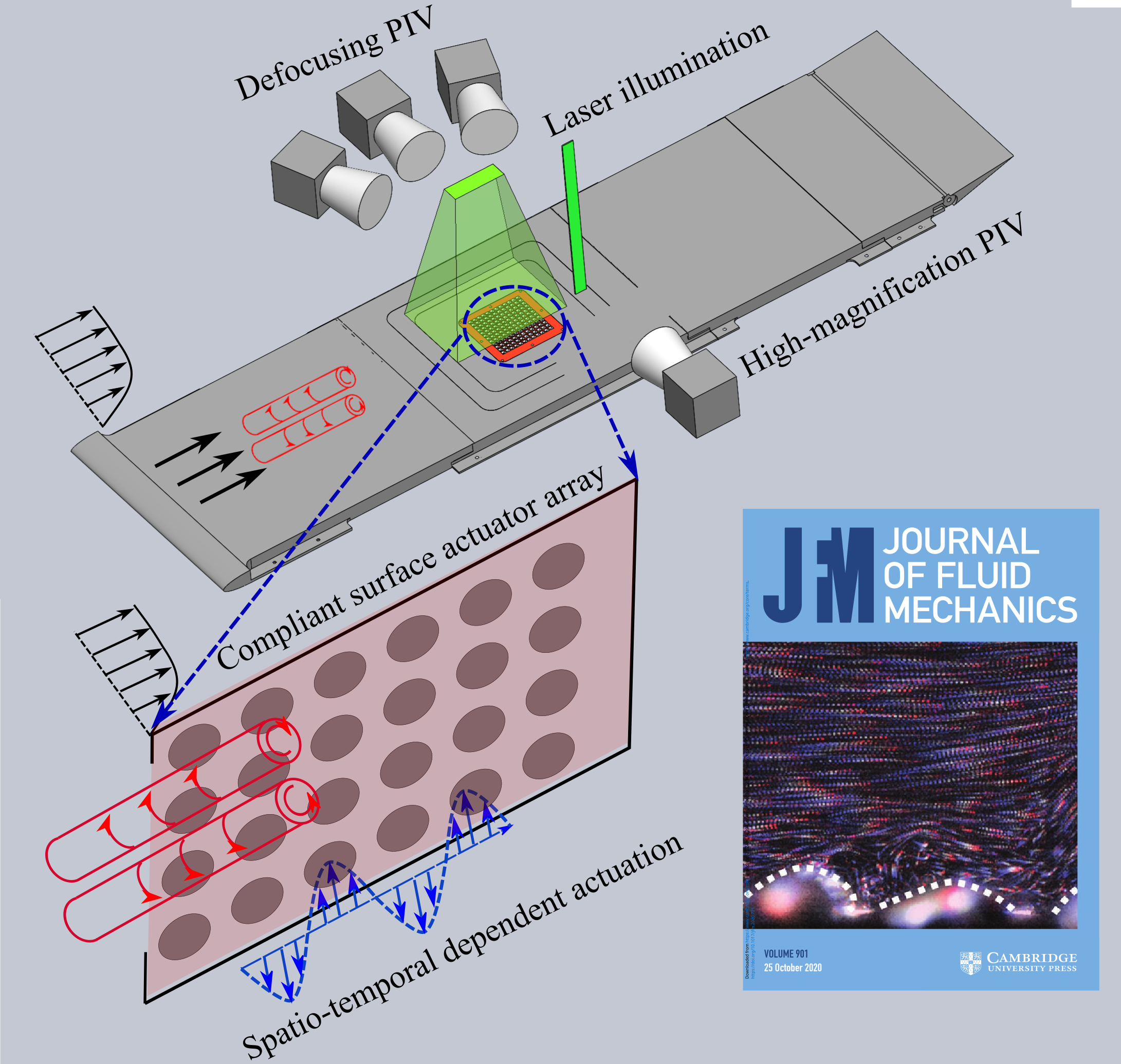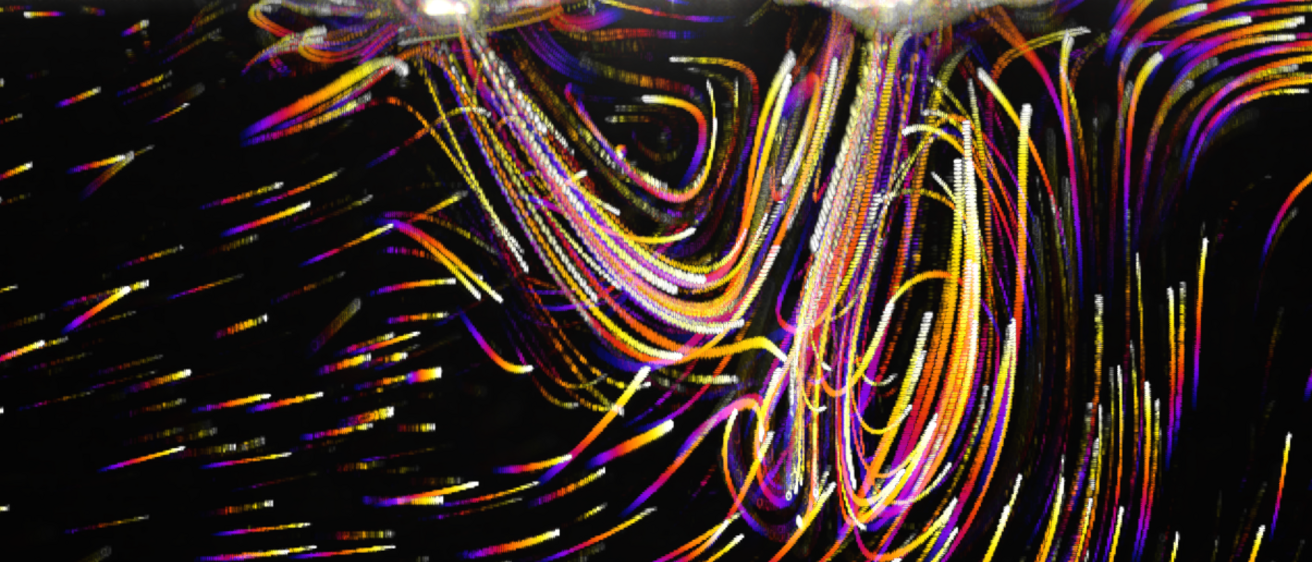Our lab currently focuses on the following research directions:
Development of novel compliant surface based synthetic jet actuator
Synthetic jet actuators (SJAs) is a promising flow control device for a wide range of engineering applications (e.g., in aerodynamics control) because of its unique tributes. The traditional SJAs employ the dynamic oscillation of a rigid active surface within an open cavity to impart momentum flux through the orifice opening of the cavity with zero mass flux. A train of isolated vortex rings are created, as shown in the video and flow pathline visualization in panel (A). The resultant synthetic jet, as a secondary flow, however, suffers from critical limitations such as low efficiency in momentum injection. Recently, we discovered that the employment of a compliant active surface (such as a thin elastic membrane) could induce special synthetic jets (shown in panel (B)) with significantly enhanced momentum injection efficiency. Some of the natural oscillation modes of the compliant surface excited by actuations at certain frequencies result in an enhanced vorticity generation and accumulation mechanism. We focus on understanding the physics and optimal actuation conditions for compliant surface-based SJAs, and developing coordinated spatio-temporal actuation strategies to exploit the synergetic effects of multiple distributed actuators. This fundamental research sheds light on the development of next generation flow control actuators with enhanced capability and expanded application range.
References
- Wang, C., & Gharib, M. (2022). Physics of a strongly oscillating axisymmetric air-water interface with a fixed boundary condition. Physical Review Fluids, 7(4), 044003.
- Wang, C. (2024) On the physics of a special synthetic jet created by the oscillation of compliant surfaces. Journal of Fluid Mechanics, Under Review
- Video entry to the Gallery of Fluid Motion of the 73th APS DFD meeting 2020
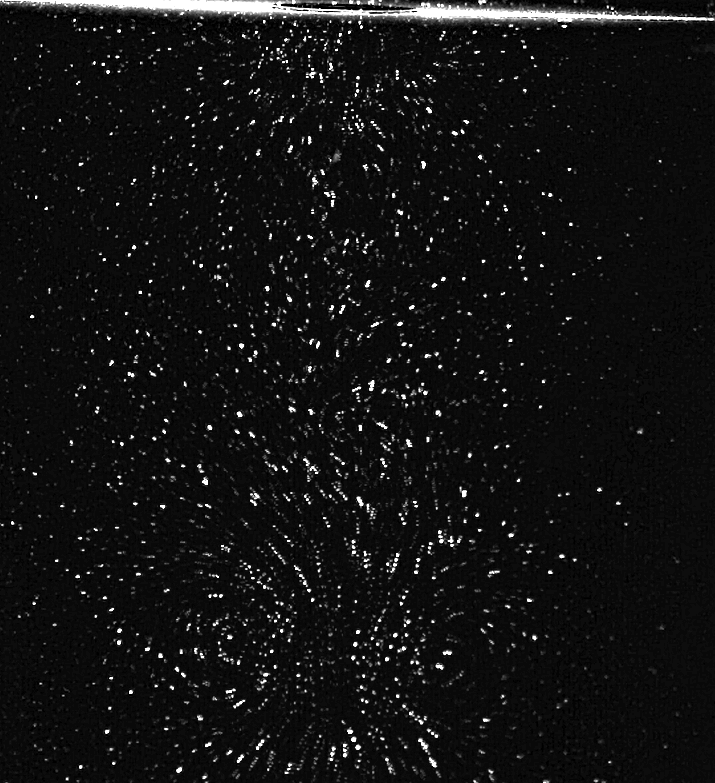
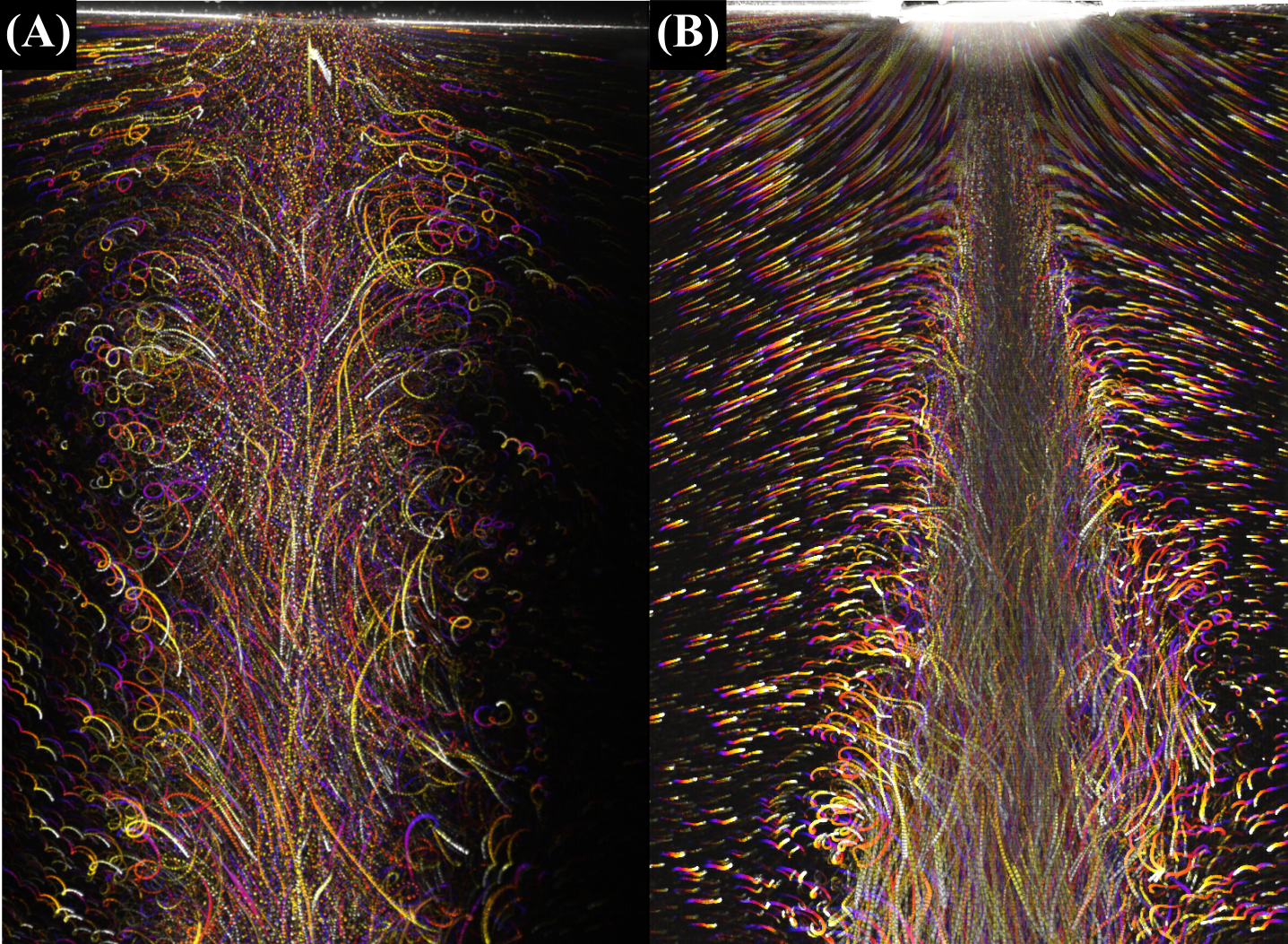
Measurement and modeling of the turbulent free surface wake flows
The turbulent wake flows behind ships critically impact the safety and energy efficiency of transportation systems. In proximity to the free surface, multi-scale, anisotropic turbulent eddies interacting with free surface waves lead to complex transport processes, such as air entrainment. Understanding and accurately modeling the effect of free surfaces on the dynamics of turbulent wake flows are fundamentally important for a wide range of naval applications. This project aims to develop a deeper understanding of the fundamental transport phenomena and to construct physics-based, higher-order models (e.g., eddy diffusivity and viscosity tensors) for the highly anisotropic turbulent wake flows. Through collaboration with the team led by Prof. Ali Mani at Stanford University, we integrate state-of-the-art experimental techniques, the Defocusing Particle Image Velocimetry (DDPIV), with numerical technique, the Macroscopic Forcing (MFM) Method. The support of the U.S. Office of Naval Research, under the guidance of Dr. Woei-Min Lin, is greatly appreciated.
References
- Butler, D., Nguyen, M., Dar, S., Eluchie, C., Wang, C. (2025). Design of a low-turbulence free surface water tunnel and dye-visualization studies of turbulent free-surface wake. In Preparation.
- Wang. C, Eluchie, C., Gharib, M. (2025). Experimental measurements of turbulent free-surface wake flow behind a bluff-body triangle wedge. In preparation
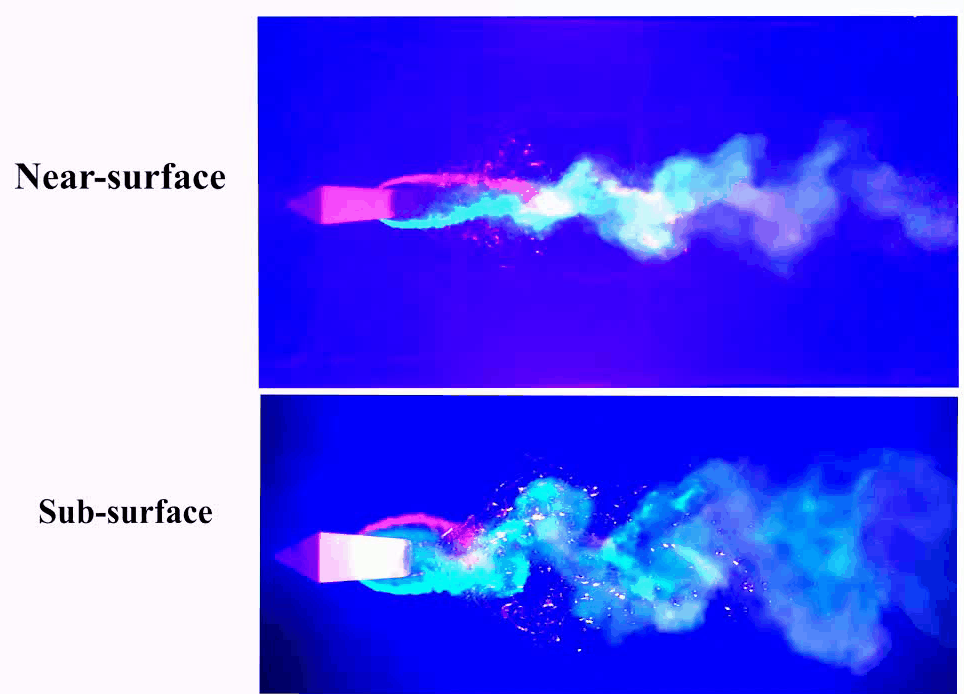
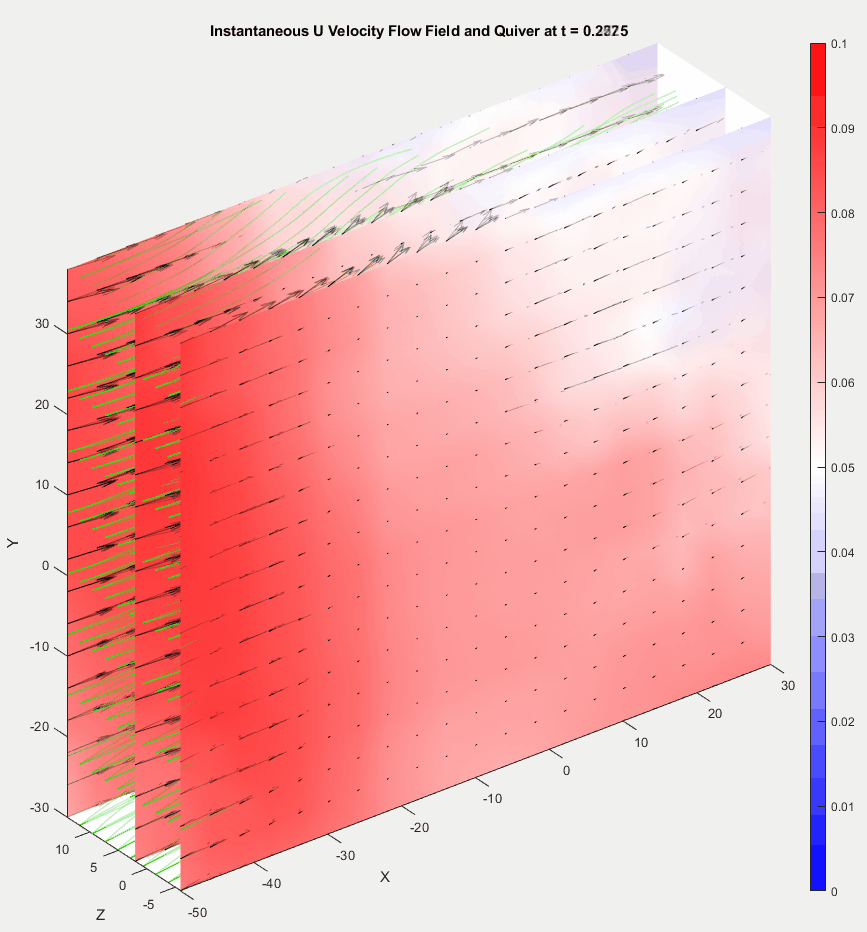
Turbulence manipulation and drag reduction by dynamic boundary surfaces
The turbulent boundary layers (TBLs) that form over the surface of transportation systems such as airplanes and containerships generates tremendous drag resistance, which account for 50% to 80% of the total power expenditure. While various promising techniques have been developed, achieving sustainable drag reduction remains a fundamental challenge for transportations at high Reynolds numbers. To achieve turbulence manipulation and drag reduction requires research efforts in two folds: (i) basic understandings of the critical flow structures and mechanisms of wall-bounded turbulent flows (e.g., the self-sustaining process) and (ii) development of system devices that are effective in interfering the fundamental transport processes (mas, momentum, and energy) in turbulence. Our recently developed dynamic surface method, through employing an array of compliant surface based synthetic jet actuators (presented in Research Direction I, shown in the video), can effectively reduce the turbulent drag by up to 45% [1]. It was further discovered that the dynamic interactions between the dynamic boundaries and turbulent shear flows stabilize turbulent vortices near the wall-surface [2,3] and induce a local re-laminarization process through a reversed energy cascade process in the proximity of deformable wall-surface [3]. The strong drag reduction effect is fundamentally linked to the unique vorticity geneation and transportation processes by the compliant surface synthetic jet actuator. Furthermore, the coordinated dynamic actuations -such as actuations that mimic in-plane or transpiration traveling waves- can further enhance the drag reduction effect. We aim to develop a deployable dynamic surface-based actuator system that enables spatio-temporal actuations to develop (i) optical actuation strategies for drag reduction at high Reynolds numbers and (ii) fundamental understandings and reduced=order models of wall turbulence. Our research work was featured on the front cover of Journal of Fluid Mechanics [1].
References
- Wang, C., & Gharib, M. (2020). Effect of the dynamic slip boundary condition on the near-wall turbulent boundary layer. Journal of Fluid Mechanics, 901, A11.
- Wang, C., & Gharib, M. (2022). On the Turbulent Drag Reduction Effect of the Dynamic Free-Slip Surface Method. Journal of Marine Science and Engineering, 10(7), 879.
- Wang, C., & Gharib, M. (2021). Local relaminarization mechanism induced by a dynamic free-slip boundary. Physical Review Fluids, 6(8), 084604.
